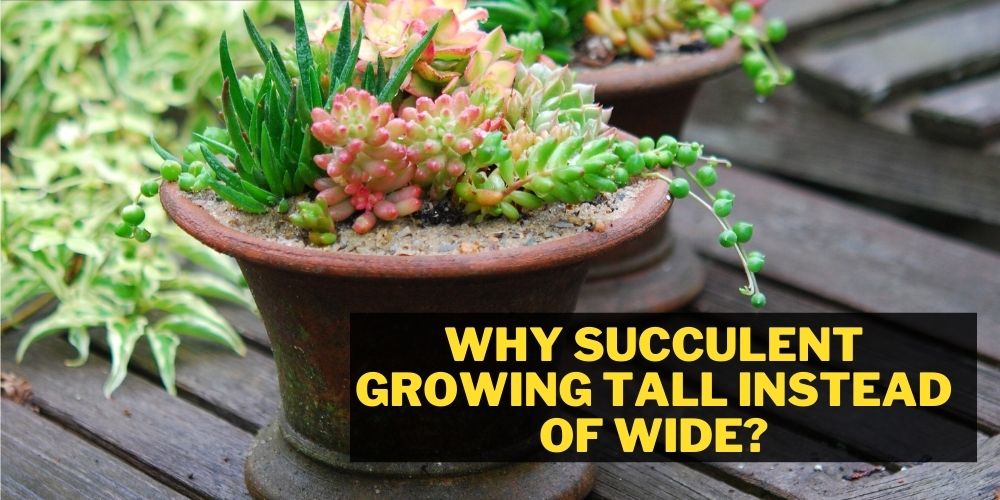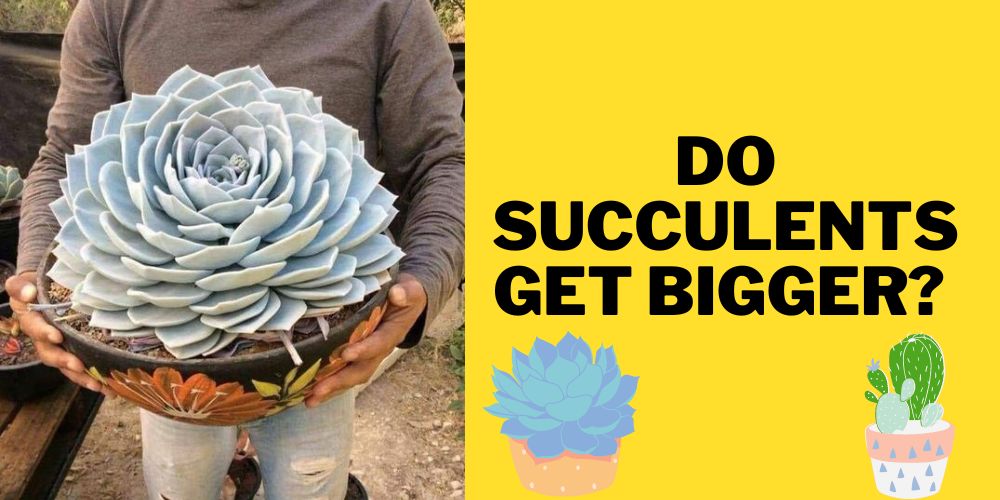When we think of eggshells, we brush them aside in the scrap bin due to their mess and often stinky aroma. But did you know that this seemingly common waste product can be put to good use?
You heard that right; eggshells contain calcium carbonate and trace amounts of protein and other organic compounds. The calcium carbonate in them is effective when used in the garden.
But are eggshells good for hydrangeas as well?
Yes, eggshells are very good for hydrangeas, and they offer an array of benefits. They help hydrangeas to grow faster and stronger by providing ample amount of calcium carbonate.
Eggshells works a little similar to lime in that it assists in moderating the soil’s acidity. The beauty of eggshells is that they are also organic. The only shortfall is that a much greater amount is required if you aim to replicate the usage of lime.
For something that usually gets thrown away, though, it’s extremely handy and cost-effective! Funnily enough, using eggshells can not only help your hydrangeas grow strong and healthy.
Studies have proven that using them can also assist in determining the color of their bloom. Let’s look at what eggshells can do for your hydrangeas and how to use them effectively.
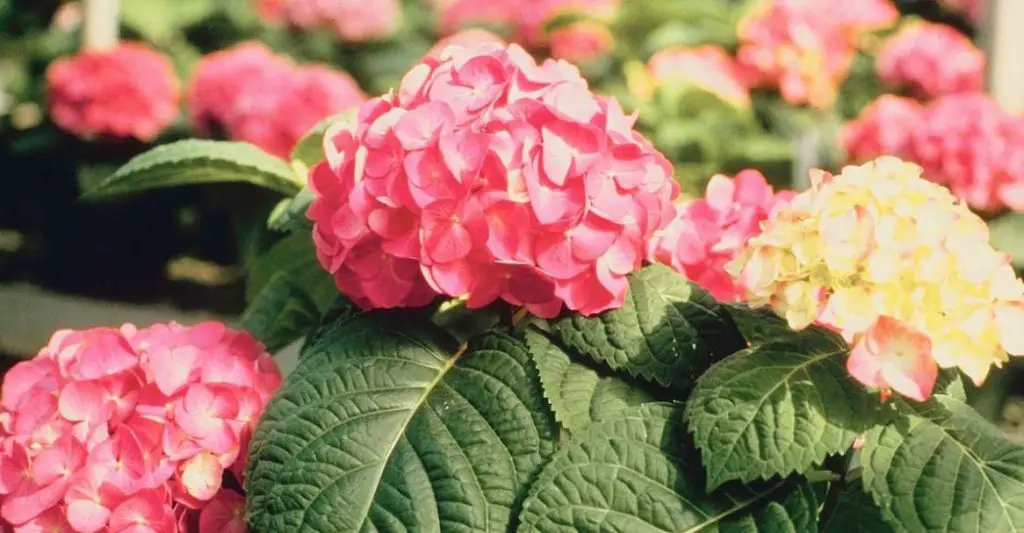
Table of Contents
Are Eggshells Good for Hydrangeas?
Using eggshells on hydrangeas comes with some great benefits. Firstly, they are a byproduct of extremely common staple food, making them free. Moreover, they also contain favorable amounts of calcium carbonate, which vastly improves their growth and makes them stronger as a result.
Not to mention that they can increase and neutralize the pH of acidic soils.
The raised pH assists with soil fertility and helps the hydrangea take in nitrogen, phosphorus and potassium with little effort. A higher pH can make the aluminum in soils less soluble, so the hydrangeas won’t absorb the metals and bloom pink flowers.
Benefits of Using Eggshells for Hydrangeas
If we use eggshells in the right amounts, it can provide some pretty handy benefits to the overall growth of Hydrangeas. When the specific minerals work their magic, the effects can do wonders for these plants. Let’s look at eggshells’ perks and what they can do.
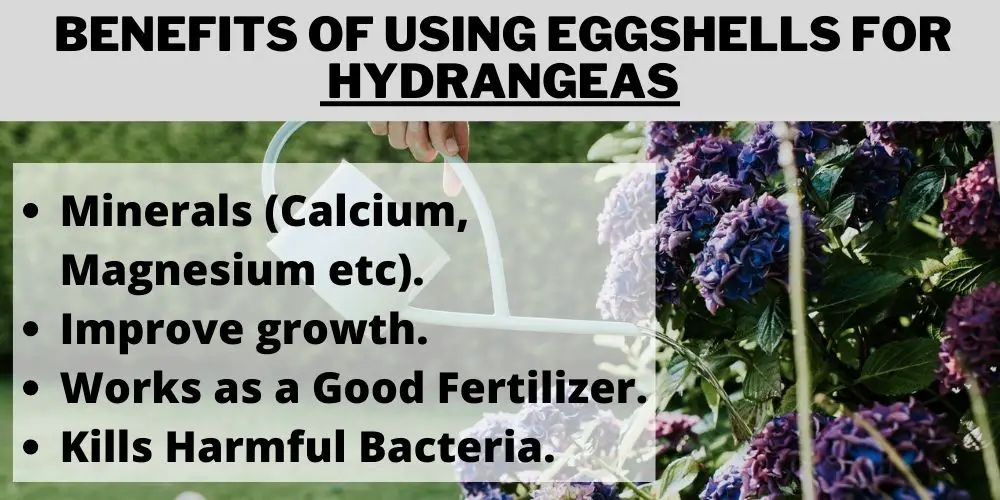
Minerals (Calcium, Magnesium etc)
Of an average-sized 5.5-gram egg, 94% contains minerals, and the other 6% is yolk and proteins. The eggshells consist mostly of calcium carbonate, 98.4% of the shells. This mineral assists in increasing the pH of soil.
The rest comprises magnesium carbonate 0.9%, calcium phosphate 0.7% and trace amounts of 25 others, including selenium, copper, zinc, molybdenum, sulfur, silicon, etc. All of the minerals in combination promote the healthy growth of hydrangeas, but calcium has the greatest effect.
Improve growth
The greater amounts of calcium found in eggshells are beneficial for overall growth. Calcium in hydrangeas soil can help to assist ammonium, potassium and phosphorus absorption. Which, as a result, stimulates photosynthesis.
As we know, photosynthesis increases the size of all plant parts. Calcium can also make the nitrogen in the soil more efficiently.
Nitrogen helps the plant use its energy correctly at the right time, producing better, stronger yields. Nitrogen is also present in the roots to assist the protein and enzymes with their regulation of water and nutrient uptake. It’s safe to say that calcium is super important to orchestrating this domino effect.
Works as a Good Fertilizer
Since the minerals in eggshells are those required for productive growth, you could say that they are an extremely beneficial fertilizer. What’s even better is that you could almost call them a ‘free fertilizer’ as they are a waste product of a staple household food product.
Kills Harmful Bacteria
There have been studies completed by pubmed.gov which reveal that heated eggshell powder (HESP) has been found to contain antimicrobial activity against some bacterial vegetative cells, fungi and bacterial spores.
So, if the eggshells are prepared correctly, they can be used to counteract certain bacteria forming around your hydrangeas.
How To Use Eggshells as Fertilizers for Hydrangeas?
Now that we have discovered all of the amazing benefits that eggshells can offer to hydrangeas let’s look at how to prepare and use them as a fertilizer.
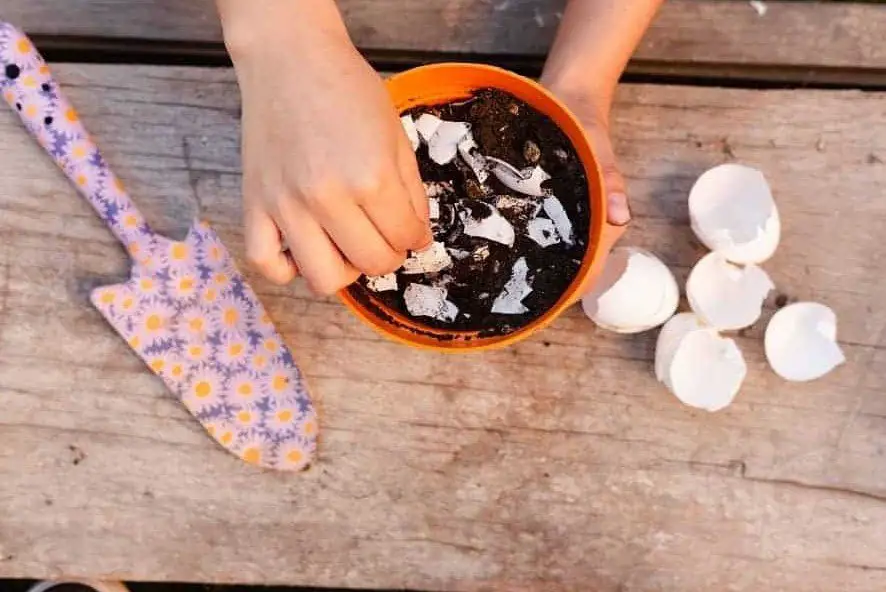
Make Powder
It’s worth noting that eggshells can be used by crushing them in your hands. But, the finer you can make them, the less work the soil compost needs to do to break them down, which means they will release their nutrients faster. The best way to create easily accessible powder is to simply:
- Collect the shells as you use them. I usually wash my eggs thoroughly before using them, so I know that when it comes to grinding, they are free of nasties and have less chance of attracting pesky animals or insects.
- You can either store the used eggshells in the fridge in an open container; this will keep them from smelling. Alternatively, add them into a container with a lid and leave them somewhere dry, cool and away from any egg-loving pests.
- Once you have enough clean eggshells (30 used eggs is a decent amount), spread them out evenly on baking paper. Put them in the oven at 225°F (110°C) and bake them for 15 minutes. Ovens can be different, so ensure you regularly check that they don’t burn to a crisp.
- Once they have been baked, add them to a coffee/spice grinder or high-powered food processor or even use a mortar and pestle to grind them down to a fine powder.
- Store them in an airtight container or shaker jar for easy use. The eggshells will last in a cool, dry place for up to 3 months.
Compost
Adding eggshells to your compost is a great way to pile in extra minerals provided by the shells, making the compost even more beneficial. The process is simple. Just add either crunched-up eggshells or go through the powder creation operation noted in the section above.
Depending on their size, the larger eggshells will take between 1 and 3 years to decompose completely. Comparatively, the powder won’t need to decompose at all. It can just be sprinkled in, and the minerals will be released almost instantly.
What Happens to Soil pH With Excess Eggshells?
Eggshells only minorly affect the pH of the soil, although there is a lot of debate surrounding this. Studies have shown that firstly, it would take an extremely long time to vastly alter the pH and secondly, the eggshells stop having an effect once the soil pH reaches around 6.8.
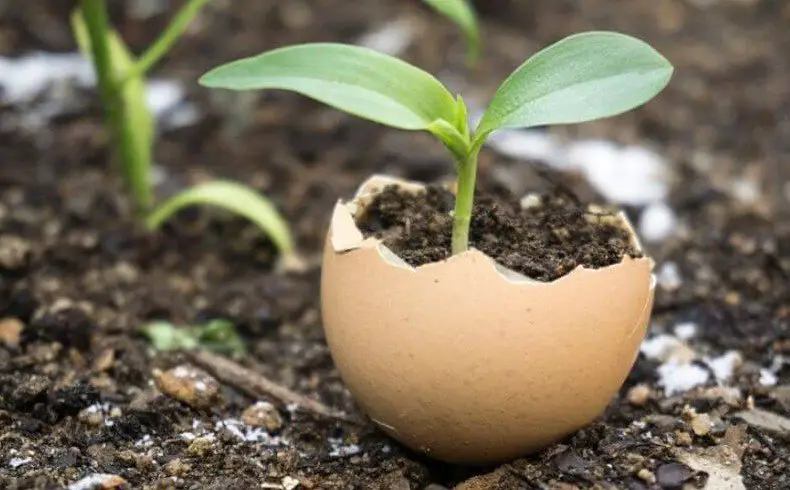
It is at this pH value that the eggshells stop breaking down. If anything, they can lower acidity by increasing the pH until the point that the pH is neutral. So it’s safe to say that when adding an excess amount of eggshells to the soil, the difference would be unnoticeable for quite some time and even then, they would only have a small effect.
If you have any problems with this concept, then purchasing a soil pH tester kit is the best way to ease your mind. Test the soil before and after using the eggshells to ascertain your findings.
What are the Other Elements to Add with eggshell for Hydrangeas?
Eggshells are a great fertilizer for hydrangeas with their extra calcium boost first and foremost. However, some elements can be used in combination with the shells that assist the process even more.
Making sure that your hydrangea gets ample water as you are fertilizing will assist in evenly distributing the powdered eggshells.
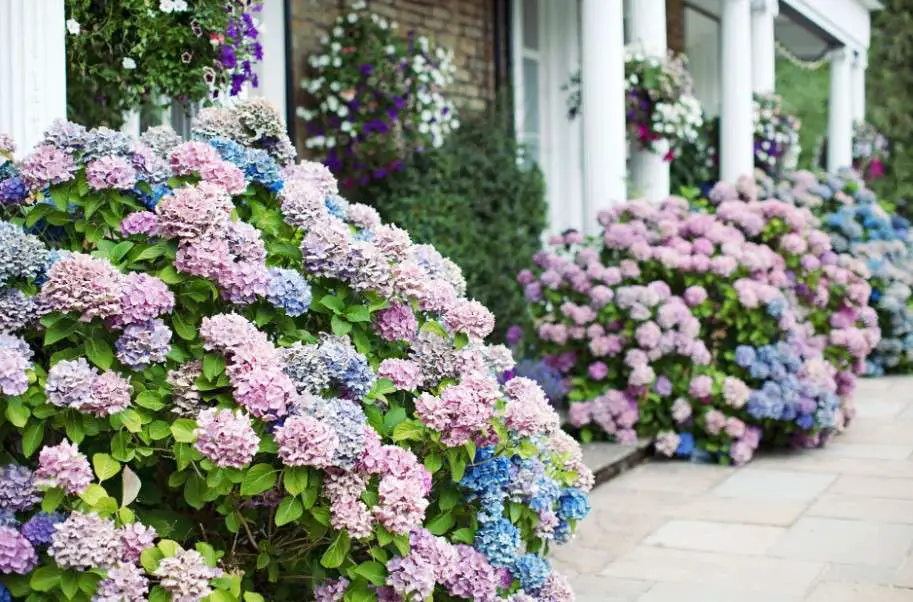
Hydrangeas like to be moist but not soggy. These plants like indirect morning sun with partial shade in later parts of the day to avoid the potential of the harsh sun. Hydrangeas thrive best in moisture retentive, well drainage soils with high organic content, such as loam.
As far as its fertilizer needs are concerned, aim to go for a good all-purpose 12-4-8 or 10-10-10 composition. Both variants work a treat! Your hydrangea plant will thrive if all the elements are evenly balanced alongside the eggshells for extra minerals.
When to Use Eggshells as Fertilizers for Hydrangeas?
The simplest way to fertilize a hydrangea, whether a chemical source or organic matter, is to apply it once a year. Slow-release fertilizers such as chemical forms work better for the long run, whereas the quick bursts produced by eggshells can boost the minerals when required.
It’s always best to test the soil for its nutrient requirements before adding anything. Sometimes, the soil can already be full of nutrients, so adding extra can damage the plant.
The best time to feed your hydrangea is usually during the springtime or early in the summer when the heat still hasn’t reached its peak. Eggshells should only really be used as a complimentary fertilizer.
Some Ineffective methods of Using Eggshells For Hydrangeas
Using eggshells as fertilizer for hydrangeas can manipulate the growth of pink blooms. The eggshells slightly raise the soil’s pH, making the aluminum in the soil less soluble.
The hydrangeas won’t absorb the aluminum and bloom pink flowers. So, if you want your blooms to be blue, the pH must be between 5.0 and 5.5. Unfortunately, eggshells will rise above that until the point of neutralization.
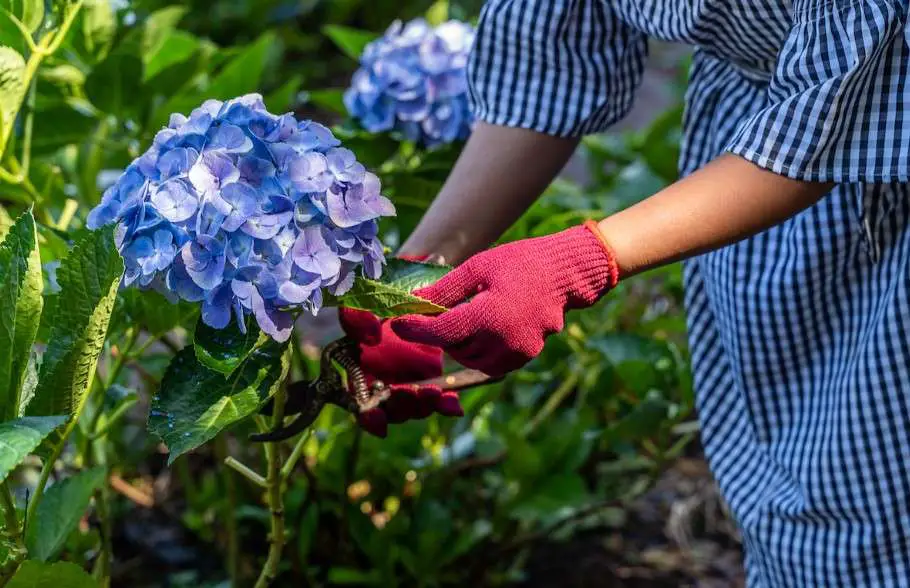
Another misconception of using eggshells as a fertilizer is using them as a sole source of food for the hydrangea. Eggshells should only be used as a complementary source of fertilization. They don’t contain all of the required nutrients that a hydrangea needs.
Their upside lies in the high amounts of calcium. All plants, including hydrangeas, require nitrogen, phosphorus and calcium.
Lastly, ensuring the eggshells are in their finest form will have the best effect on a hydrangea. You can, of course, use hand-crushed eggshells, but they will take an extremely long time to break down.
Additionally, bigger, sharper-edged chunks can sever the root system, which could cause issues later on. Adding finely ground eggshells to your compost and/or soil is much more beneficial than larger, jagged chunks.
Frequently Asked Questions (fAQs)
Do hydrangeas like coffee grounds and eggshells?
Depending on what color blooms you want, coffee grounds and eggshells can be used to manipulate these colors. Coffee grounds lower the pH of the soil, allowing any traces of aluminum in the soil to be easily used, producing blue blooms. On the other hand, eggshells do the opposite and help to produce pink blooms.
Do eggshells turn hydrangeas blue?
No, eggshells raise the pH of the soil, making the aluminum in the soil less soluble. This, in turn, manipulates the blooms into turning pink in color.
How do you crush eggshells for plants?
You can crush them by hand, although decomposing will take a long time. Otherwise, they can be baked at 225°F (110°C) for 15 mins then ground down using a coffee or spice grinder. In this form, they are perfect for adding to a plant’s soil or compost, depending on their nutrient requirements.
Conclusion:
As we have discovered, eggshells in a fine powdered form are a great complementary source of fertilizer. Best of all, they are pretty much free! They also can manipulate the color of your hydrangea blooms into a beautiful pink hue. The fines are simple to prepare and apply.
Take note that they shouldn’t be used as a stand-alone fertilizer as they don’t contain ALL nutrients required to grow a hydrangea or any plant. We hope that this article has been helpful.

